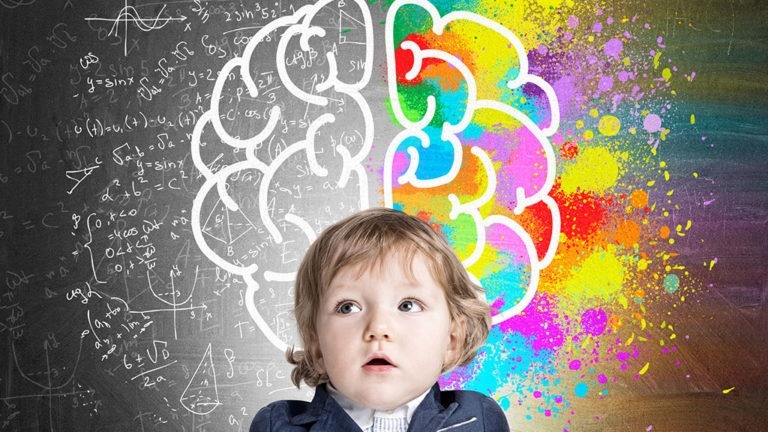We’re Born Natural Innovators, So Does School Kill Creativity?

As children, we’re born with wild and inventive imaginations. In fact, 98 percent of children are born creative geniuses according to a test devised by NASA scientists. But as we get older that figure dwindles, and by adulthood, the number of creative geniuses drops to an astonishingly low average. Which begs the question: does school kill creativity?
George Land’s Creativity Test
When the deputy director for NASA wanted to figure out how to separate creative types from the rest, he tapped George Land to create a test. The goal was to seclude those who could think outside the box and come up with atypical solutions to some of NASA’s toughest problems. So, in 1968, he created a test that accurately predicted creativity, but then found himself faced with the question of where creativity comes from. Is it learned, or does it come from experience?
Land decided to apply his test to a range of age groups to see how creativity varied as we get older. He used a sample of 1,600 children and continued the study into his subjects’ adulthood. Incredibly, he found that by the time they reached maturity, only two percent of subjects passed the creativity test, despite their creative success as kids.
Land learned there are two patterns for the way we generate ideas in our minds. The first is divergent thinking, or being able to generate new possibilities – where creativity comes from. The other was convergent thinking, where we judge something by testing, criticizing and evaluating it.
As it turns out, Land says we’re taught to use both types of thinking simultaneously, forcing them to compete with each other. When we think of new possibilities, we’re immediately judging, criticizing and censoring them, without just letting them come to the surface.
Creativity and Ken Robinson’s Ted Talk
One of the most-watched TED talks of all time belongs to Ken Robinson who carries the torch for Land in the fight to bring back creativity. Since his wildly successful speech garnering nearly 50 million views, he has written books and given several more TED talks discussing how we can tap back into that latent creativity.
Robinson noticed that our education system teaches us that being wrong is the worst possible outcome. Nowhere is there a better example of this than standardized testing.
Our thought process is forced to conform to controlled paradigms of right and wrong, and so ideas that don’t fit the mold are rejected. And in the past few decades, ascription to that paradigm has been pushed harder by prescribing drugs to children who don’t easily fall in line with the system’s ideal standards.
Robinson points to the example of Gillian Lynne, one of the most famous theater choreographers who’s made millions for her work on Broadway shows, including Cats and Phantom of the Opera. When she was a child she struggled with school and was told she had a learning disorder. Her parents took her to a doctor to figure out what was wrong and potentially prescribe her medication. The doctor told them she wasn’t sick, she just needed to pursue dancing. And the rest is history.
Imagine how many dancers, artists, and creative types have had their potentials wasted because our system doesn’t have the time or patience to guide them in the right direction. Instead, we’re disciplined to follow narrow paths and if we don’t conform, we’re told that we failed.

Robinson says that a teacher’s job is not just to relay information that they learned to their students; not to simply be a delivery system. That’s part of it, he says, but there’s so much more.
He says that teachers are the lifeblood of success to schools, they should provoke, stimulate, and mentor students. Education, he says, is not the same as learning, learning requires engagement and sparked curiosity.
Louis Mobley’s Creative Insights
Before Land created his creativity test for NASA, Louis Mobley was hired by IBM to teach its top employees how to think creatively – his teachings led to the creation of the IBM Executive School.
Mobley quickly found that many of the executives already working for IBM didn’t fall within the expected parameters when it came to standardized testing, so he realized he needed to figure out what made them successful leaders. The answer: being able to think creatively. So he formed a list of six creative insights he found were key to success in leadership.
- Traditional teaching methods, like testing and memorization, were less than worthless. These systems were counterproductive to creativity and forced students to think linearly when instead they should be thinking in a non-linear manner.
- The process of becoming creative is an unlearning process. Instead of expecting students to think within preconceived assumptions, he wanted them to overturn existing beliefs.
- Being creative can’t be learned, it’s innate within us and must be released by doing it. Often creativity was channeled offline and in informal modes of peer to peer interaction.
- Hanging around creatives was the best way to inspire creativity.
- Creativity is highly associated with self-knowledge – it is impossible to overcome biases if we’re not aware of them.
- You’re allowed to be wrong. Good ideas come from lots of bad ones. The reason we don’t hit our potential is from fear of being wrong.
The truth in Mobley’s learnings is nowhere more obvious than in the success of IBM, and it’s unfortunate that these axioms aren’t applied more in our education system. But if there’s one thing that all of these researchers learned from studying creativity, it’s that we never lose it, it stays latent in all of us. In order to foster creativity, one must encourage its expression and not fear being wrong every now and then.
82 Ways To Achieve a Higher State of Consciousness

George Gurdjieff was an influential early 20th-century mystic, philosopher, and spiritual teacher. He observed that most humans live their lives in a state of hypnotic “waking sleep. To combat this, Gurdjieff developed a method to transcend to a higher state of consciousness and achieve full human potential. These are his “commandments,” simple ways you can progress on your journey towards waking up:
1. Ground your attention on yourself. Be conscious at every moment of what you are thinking, sensing, feeling, desiring, and doing.
2. Always finish what you have begun.
3. Whatever you are doing, do it as well as possible.
4. Do not become attached to anything that can destroy you in the course of time.
5. Develop your generosity – but secretly.
6. Treat everyone as if he or she was a close relative.
7. Organize what you have disorganized.
8. Learn to receive and give thanks for every gift.
9. Stop defining yourself.
10. Do not lie or steal, for you lie to yourself and steal from yourself.
11. Help your neighbor, but do not make him dependent.
12. Do not encourage others to imitate you.
13. Make work plans and accomplish them.
14. Do not take up too much space.
15. Make no useless movements or sounds.
16. If you lack faith, pretend to have it.
17. Do not allow yourself to be impressed by strong personalities.
18. Do not regard anyone or anything as your possession.
19. Share fairly.
20. Do not seduce.
21. Sleep and eat only as much as necessary.
22. Do not speak of your personal problems.
23. Do not express judgement or criticism when you are ignorant of most of the factors involved.
24. Do not establish useless friendships.
25. Do not follow fashions.
26. Do not sell yourself.
27. Respect contracts you have signed.
28. Be on time.
29. Never envy the luck or success of anyone.
30. Say no more than necessary.
31. Do not think of the profits your work will engender.
32. Never threaten anyone.
33. Keep your promises.
34. In any discussion, put yourself in the other person’s place.
35. Admit that someone else may be superior to you.
36. Do not eliminate, but transmute.
37. Conquer your fears, for each of them represents a camouflaged desire.
38. Help others to help themselves.
39. Conquer your aversions and come closer to those who inspire rejection in you.
40. Do not react to what others say about you, whether praise or blame.
41. Transform your pride into dignity.
42. Transform your anger into creativity.
43. Transform your greed into respect for beauty.
44. Transform your envy into admiration for the values of the other.
45. Transform your hate into charity.
46. Neither praise nor insult yourself.
47. Regard what does not belong to you as if it did belong to you.
48. Do not complain.
49. Develop your imagination.
50. Never give orders to gain the satisfaction of being obeyed.
51. Pay for services performed for you.
52. Do not proselytize your work or ideas.
53. Do not try to make others feel for you emotions such as pity, admiration, sympathy, or complicity.
54. Do not try to distinguish yourself by your appearance.
55. Never contradict; instead, be silent.
56. Do not contract debts; acquire and pay immediately.
57. If you offend someone, ask his or her pardon; if you have offended a person publicly, apologize publicly.
58. When you realize you have said something that is mistaken, do not persist in error through pride; instead, immediately retract it.
59. Never defend your old ideas simply because you are the one who expressed them.
60. Do not keep useless objects.
61. Do not adorn yourself with exotic ideas.
62. Do not have your photograph taken with famous people.
63. Justify yourself to no one, and keep your own counsel.
64. Never define yourself by what you possess.
65. Never speak of yourself without considering that you might change.
66. Accept that nothing belongs to you.
67. When someone asks your opinion about something or someone, speak only of his or her qualities.
68. When you become ill, regard your illness as your teacher, not as something to be hated.
69. Look directly, and do not hide yourself.
70. Do not forget your dead, but accord them a limited place and do not allow them to invade your life.
71. Wherever you live, always find a space that you devote to the sacred.
72. When you perform a service, make your effort inconspicuous.
73. If you decide to work to help others, do it with pleasure.
74. If you are hesitating between doing and not doing, take the risk of doing.
75. Do not try to be everything to your spouse; accept that there are things that you cannot give him or her but which others can.
76. When someone is speaking to an interested audience, do not contradict that person and steal his or her audience.
77. Live on money you have earned.
78. Never brag about amorous adventures.
79. Never glorify your weaknesses.
80. Never visit someone only to pass the time.
81. Obtain things in order to share them.
82. If you are meditating and a devil appears, make the devil meditate too.





































